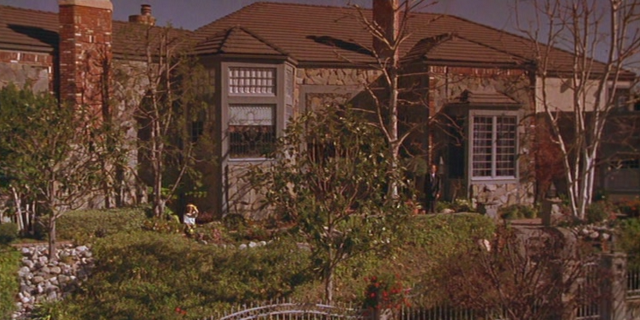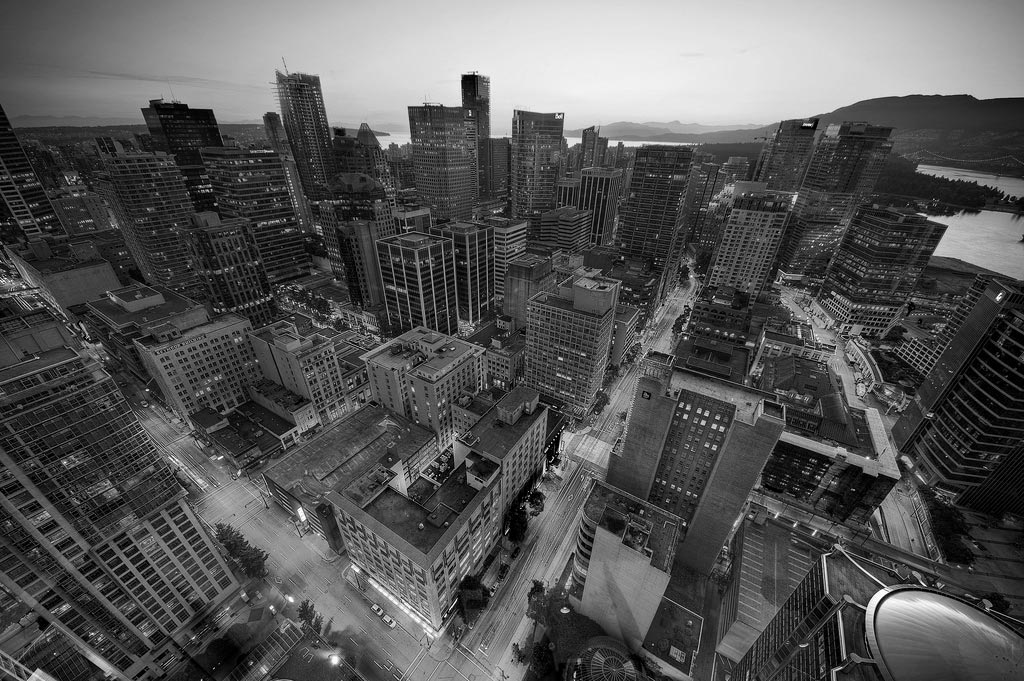Carol White sits alone in her sterile temperate igloo. The most decorative object in her room is a foot-square mirror, a pathetic counterpoint to a lonely, functional end table. Her face expresses the passivity she has been comfortable with for most of the movie and, presumably, most of her life. However, she glances at the mirror, and a brave, stimulated streak of hope flashes on her face; she walks to the mirror and, with assertiveness, repeats the words “I love you”, to herself and to the viewer.
It is only a matter of time before her seemingly unmotivated malaise, ranging from dizziness to uncontrollable coughing to seizures, rejects all of Carol’s environment; when Carol lies, slowly dying, on the bare floor of her completely empty igloo. Before the mirror inevitably causes her physiological harm, it is her last chance to reverse her illness; the group therapy at her retreat for similarly-illed people and its conservative physical regime don’t seem to be helping.
The line “I love you” ends Safe on a characteristically ambiguous note, but it’s a noticeably more hopeful note than the rest of the movie. For the first time, Haynes gives his main character self-awareness, total consciousness – Carol has a goal, a direction, and an ideal to work towards. Even when she decided to go to the retreat, Wrenwood, she does so on the basis of a vaguely worded flyer posted at her gym, with little planning or consideration.
What makes Safe so scary is how its main character is so unable to deal with the confounding forces attacking her body. Inability seems to define her life. This isn’t to mean that she isn’t conventionally successful; she has a stable marriage, a solid relationship with her step-son, and lives in a sturdy mansion. A homemaker, she has time for leisurely activities like taking freestyle aerobics classes at the gym, decorating her own home, and attending her acquintance’s baby shower. While she has the luxury of living an uncomplicated life, though, there is a sense that her whole existence has happened to her; she has never acted, or done, in her entire life. Credit Julianne Moore’s airy, lightheaded performance: every slow stutter in her voice, every indecisive thought behind her movement, creates a character of heartbreaking ineffectiveness. Indeed, the script places Carol in situations which are pitiful in their blandness. Her relationships, stable as they are, are all politely distant; her passion for home décor is hopelessly trapped within the pastels and faux-exotics of the ’80s.
When Carol starts developing strange symptoms, there is a sense that rather than being attacked from within, the global environment is attacking her. The most apparent example is her coughing fit, brought upon by the excessive exhaust from a truck in front of her on the road; a POV shot gives the exhaust an enveloping quality, like an aggressively moving cloud of poison. Later, she gets an allergy test that triggers a panic-like attack. The rows of circular bruises on her arm are in themselves a needlephobe’s nightmare, but the idea of being injected with poison is an incredibly unsettling thought, enough to make anyone receiving it an abject victim. Throughout the movie, whatever wreaks havoc on Carol’s body enters in direct, efficient, unsettling ways, whether it be exhaust into her lungs, hair chemicals through her skin, or an allergy test into the bloodstream.
This is where the claustrophobia of my title is triggered; Carol’s environment is closing in on her, putting her out of stasis, and very slowly killing her. Other scenes are more evidently claustrophobic, the most apparent being the opening sex scene between Carol and her husband. Carol’s clear boredom already makes the scene supremely awkward, but the way her husband slowly nudges her to the edge of the bed with his body has a discomforting, restricting quality – something like trying to take a breath and briefly, unexpectedly suffocating.
This mood remains an undercurrent through the whole movie. Extra credit goes to the exacting cinematography, borrowed from the most austere of ’60s and ’70s arthouse. When the camera is still, it firmly places Carol within the frame with no regard for where she may want to be in the frame – the camera is hyperstill, in a way. When the camera moves, it usually zooms in at a creeping pace, closing in on Carol without her knowledge. The sound design works to this end too; every piece of dialogue, diegetic noise, and music is compressed and placed at the foreground for maximal, excessive immediacy. When we see an interlaced TV image at extreme close-up spouting vague whatevers, we desperately want to pull away.
The movie trades in agoraphobia too, and these two fears of space aren’t necessarily mutually exclusive. Consider an early shot when she is working in her garden: The camera slowly pulls back and lets the extreme size of her house become fully apparent. Carol gets smaller and smaller in frame, dwarfed and crushed by the house behind and around her. Her body is a spot on the screen, made insignificant by the world around her. Many shots place her in large, mostly empty rooms, singling her out. The camera, always watching, seems out to get her, but we don’t identify with the camera; there is an unpleasant notion that something is there.
Carol generally reacts to her symptoms by escaping. When she gets a coughing fit, she drives off the road and into a parking garage; when scents keep her awake, she goes outside and walks around her garden. When she can’t take any more of the confines of civilization, she escapes to the open air of Wrenwood; but when that doesn’t help, she escapes to the confines of her igloo. Herein lies the tragedy: she continually escapes, but her destination is never any better. In a particularly ironic illustration of this fact, she starts to take a drug and herbal supplement regiment to help her illness – she is being killed by what she can’t see, and reacts by taking mysterious pills. She continues to bounce around and through her life, even when taking steps to get better; only luck has left her alive this long.
Furthering the terrifying nature of Carol’s agoraclaustrophobia is how it works on a metaphorical level – when the world that rejects her is not her environment, but her society. Having agoraclaustrophobia means she is quite literally unable to fit in – confined spaces crush her, and open spaces expose her – but she is unable to fit in with society, as well. Whether it’s herself or society that drives her away is ambiguous, but this metaphor is literalized in her lukewarm relationships; her husband never seems more than slightly concerned or annoyed about the well-being of his wife, for example. Carol’s life seems plainspoken and unenthralling enough to bring up the question: what if no one really cares for her, or wants her around? Are there excitements and happenings occurring all around her, and she just meanders through life in her bubble? Is her illness the world’s way of disposing of her so that she doesn’t have to be the dead weight to her husband or her friends? The possibility that the whole world actively doesn’t care about you is a depressive thought, and one that can shake the vulnerable.
Of course, Safe is more ambiguous than that. After all, Carol’s illness throws a wrench into her dull existence. Her journey in the movie ends with her words at the mirror, perhaps her lowest point. But is the point of her illness to teach her to be assertive, to aspire, to do? It is the only moment of hope in such an otherwise cold, unrelenting movie.


